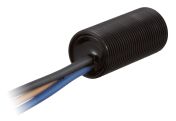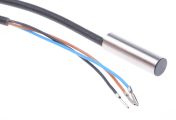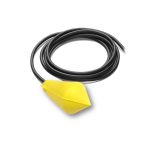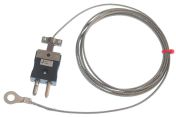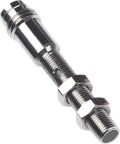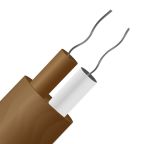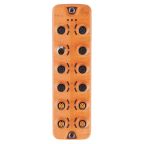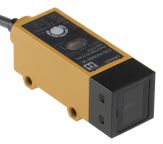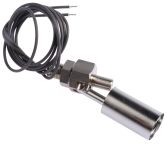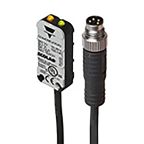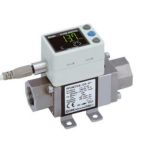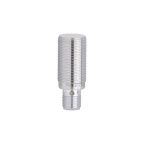Discover a comprehensive selection of sensors at RS Philippines. We offer different types of sensors, including versatile general-purpose sensors, specialized RFID and IO-Link options. Plus, we have high-performance models designed for precise detection, measurement, and smart automation applications.
Types of Sensors
Sensors are versatile tools that are able to detect and measure different types of energy and transform them into a readable output. Additionally, they are available in distinctive types for specific measurement purposes. Here are some of the types of sensors available at RS Philippines:
Thermal Sensors
- Definition: Thermal sensors are also available as industrial temperature sensors. They measure the degree of hotness or coldness of an object or environment.
- Mechanism: These sensors utilize various types of technologies, such as thermocouples, thermistors, or resistance temperature detectors (RTDs), to convert temperature changes into electrical signals.
- Application: Thermal sensors find widespread use in industrial processes, HVAC systems, and consumer electronics, ensuring optimal temperature control and safety.
Proximity Sensors
- Definition: Proximity sensors detect the presence or absence of nearby objects without physical contact.
- Mechanism: This type of sensor encompasses various technologies, including ultrasonic sensors that use sound waves, capacitive sensors that employ electromagnetic fields, and inductive sensors that detect metal objects.
- Application: Proximity sensors are commonly used in industrial automation for object detection, position sensing, and safety applications. In the food safety industry, capacitive proximity sensors can detect the presence of metallic contaminants without contact, ensuring product quality.
Flow Sensors
- Definition: Flow sensors measure the rate at which fluids (liquids or gases) move through a pipe or channel.
- Mechanism: Different types of flow sensors utilize various principles, such as differential pressure, turbine rotation, or electromagnetic induction, to determine flow rate.
- Application: Flow sensors are crucial in industries like manufacturing, water treatment, and oil and gas, where precise flow control is essential for efficiency and safety.
Pressure Sensors
- Definition: Pressure sensors measure the force exerted by a fluid (gas or liquid) on a surface.
- Mechanism: This type of sensor typically uses a diaphragm or other sensing element that deforms under pressure, converting this deformation into an electrical signal.
- Application: Pressure sensors are widely used in industrial processes, automotive systems, and medical devices to monitor and control pressure levels.
Photoelectric Sensors
- Definition: Photoelectric sensors, also known as optical sensors, use light to detect the presence or absence of objects. Additionally, they are available as through-beam sensors, retro-reflective sensors and diffuse sensors.
- Mechanism: These sensors emit a beam of light and measure the reflected light or the interruption of the beam to determine an object’s presence or position.
- Application: Photoelectric sensors are commonly used in automation, packaging, and material handling applications for tasks like object counting, position sensing, and presence detection.
Light and Color Sensors
- Definition: Light and color sensors measure the intensity and spectral characteristics of light.
- Mechanism: These sensors often use photodiodes or other light-sensitive elements to convert light into electrical signals. Color sensors may use filters or other spectral analysis techniques to determine specific colors or shades.
- Application: Light sensors are used in various applications, including street lighting control, display brightness adjustment, and agricultural monitoring. On the other hand, color sensors are employed in industries like printing, textile manufacturing, and food processing to ensure consistent color quality and accuracy.
Motion Sensors
- Definition: Motion sensors are a broad category of sensors used to detect movement or changes in position.
- Mechanism: Common types of motion sensors include passive infrared (PIR) sensors, which detect infrared radiation emitted by objects, and microwave sensors, which use radar-like technology.
- Application: PIR sensors have a wide range of applications, from security systems and automatic lighting to robotics and industrial automation. They are particularly popular for motion-activated lighting and security applications.
What are Smart Sensors?
The rise of Industry 4.0 and the Internet of Things (IoT) is transforming industrial automation. At the forefront of this revolution are smart sensors, which combine traditional sensing capabilities with advanced digital processing and communication features.
Smart sensors, a key component of the IoT ecosystem, not only measure physical quantities like temperature, pressure, or motion but also possess intelligent capabilities. They can self-identify, perform self-diagnostics, and communicate with other devices and systems seamlessly. Plus, they help to provide live data while responding on their own to identify and correct issues to improve efficiency.
IO-Link, a global networking standard for different types of sensors, is instrumental in enabling this communication. It allows smart sensors from different manufacturers to exchange data and operate together in a unified system.
Applications of Sensors
Sensors are ubiquitous in modern technology, playing a vital role in diverse industries across the Philippines. Here are some key applications of sensors in different sectors:
- Industrial Automation: In manufacturing, sensors are essential for monitoring and controlling processes, ensuring quality, and improving efficiency. Motion sensors and detectors track the movement of parts and products, while temperature and pressure sensors monitor critical parameters in machines and equipment. Meanwhile, smart sensors can even predict potential failures, allowing for proactive maintenance.
- Environmental Monitoring: Environmental sensors are crucial for monitoring air and water quality, detecting pollutants, and ensuring compliance with regulatory standards. Light sensors measure illuminance levels, while humidity sensors track moisture content. These sensors help maintain a safe and healthy environment.
- Consumer Applications: Sensors have become integral to consumer electronics, enhancing functionality and user experience. Motion sensors trigger alarms in security systems, while proximity detectors activate touchless faucets and automatic doors. In smartphones, various sensors like accelerometers, gyroscopes, and light sensors enable features like screen rotation, augmented reality, and adaptive brightness.
How to Choose Sensors
Selecting the right sensor for your specific application requires careful consideration of several factors. Here's a guide to help you make an informed decision:
- Purpose and Functionality: Clearly define the primary function of the sensor. What do you need to measure or detect? As mentioned, different sensor types are designed for specific purposes, such as temperature, humidity, pressure, motion, or proximity.
- Measurement Range and Sensitivity: Determine the range of values the sensor needs to measure accurately. Also, consider the desired level of sensitivity, which refers to the smallest change the sensor can detect.
- Response Time: How quickly does the sensor need to react to changes in the measured parameter? Remember that some applications require real-time or near-real-time responses, while others may tolerate slower response times.
- Operating Temperature and Humidity: Consider the environmental conditions in which the sensor will operate. Ensure the sensor can withstand the expected temperature and humidity ranges.
- Exposure to Elements: Will the sensor be exposed to dust, moisture, chemicals, or other potentially damaging elements? Choose a sensor with appropriate ingress protection (IP) ratings to safeguard against environmental factors.
- Mechanical Stresses: If the sensor will be subjected to vibration, shock, or other mechanical stresses, select a model designed to withstand such conditions.
- Connectivity Options: Determine how the sensor will connect to your system. Options include wired connections (e.g., analog, digital, or IO-Link) and wireless protocols (e.g., Bluetooth or Wi-Fi).
- Power Requirements: Consider the power source available for the sensor. Some sensors require external power, while others are self-powered or battery-operated.
- Output Type: The output type of the sensor should be compatible with your data acquisition or control system. Common output types include analog voltage or current, digital signals, or serial communication.
- Ease of Installation and Maintenance: Whether you’re buying passive infrared, flow, or pressure sensors, choose a product that is easy to install and maintain.
Buy Sensors from RS
RS Philippines is your one-stop shop for a wide variety of high-quality sensors designed to meet the diverse needs of industries across the country. Whether you're looking for precise light sensors to optimize lighting conditions, advanced color sensors for accurate color measurement and analysis, or any other type of sensor to enhance your operations, we have you covered.
Our extensive selection includes sensors from leading brands, ensuring reliability, accuracy, and durability. We also offer expert support to help you choose the right sensors for your specific applications, as well as fast delivery options to get your projects up and running quickly. Choose from our wide range of sensors today and enjoy high-quality products, reliable customer support, and fast delivery. For more information on our delivery options and services, please refer to our delivery page.































